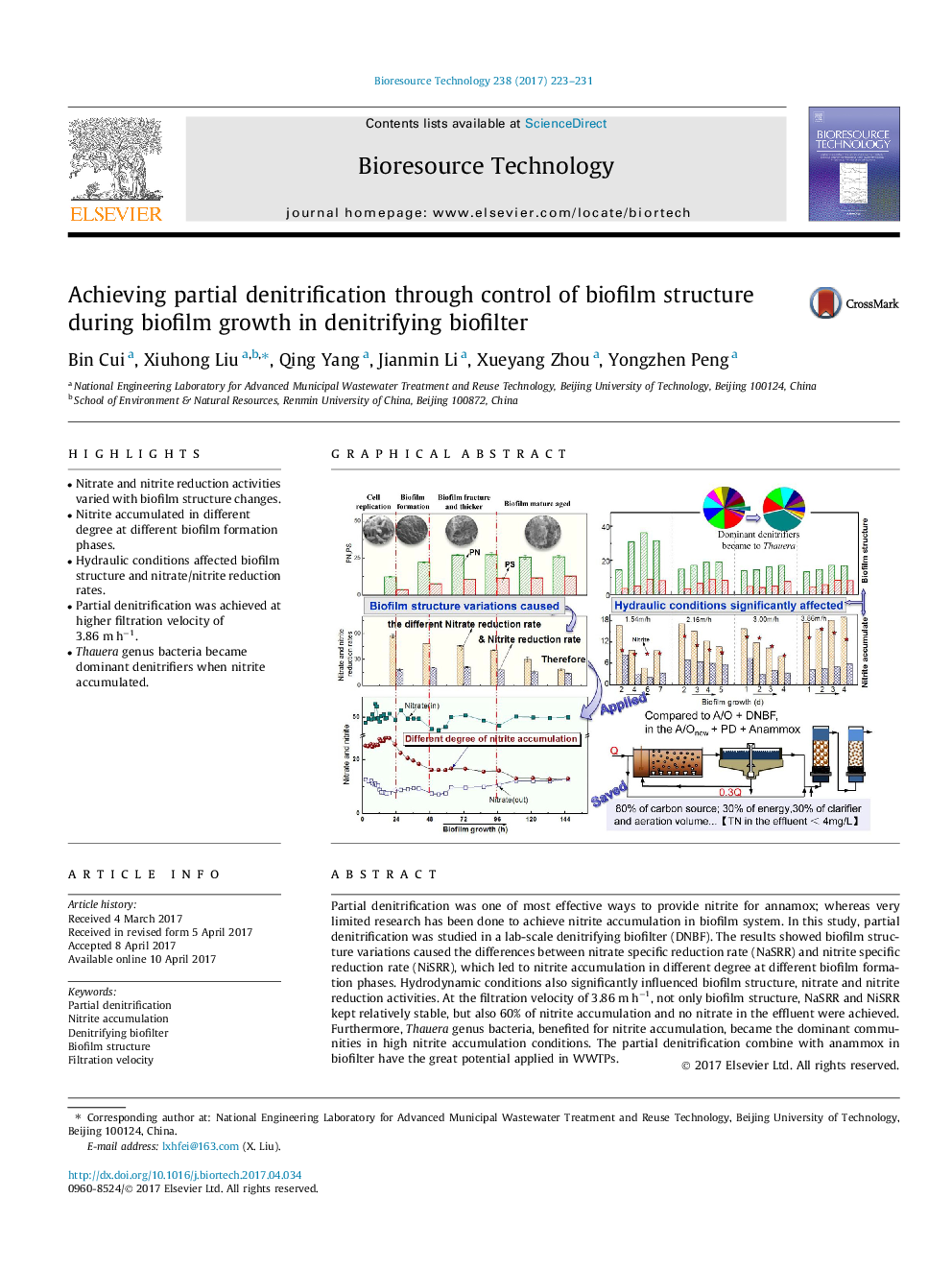| Article ID | Journal | Published Year | Pages | File Type |
|---|---|---|---|---|
| 4997213 | Bioresource Technology | 2017 | 9 Pages |
â¢Nitrate and nitrite reduction activities varied with biofilm structure changes.â¢Nitrite accumulated in different degree at different biofilm formation phases.â¢Hydraulic conditions affected biofilm structure and nitrate/nitrite reduction rates.â¢Partial denitrification was achieved at higher filtration velocity of 3.86 m hâ1.â¢Thauera genus bacteria became dominant denitrifiers when nitrite accumulated.
Partial denitrification was one of most effective ways to provide nitrite for annamox; whereas very limited research has been done to achieve nitrite accumulation in biofilm system. In this study, partial denitrification was studied in a lab-scale denitrifying biofilter (DNBF). The results showed biofilm structure variations caused the differences between nitrate specific reduction rate (NaSRR) and nitrite specific reduction rate (NiSRR), which led to nitrite accumulation in different degree at different biofilm formation phases. Hydrodynamic conditions also significantly influenced biofilm structure, nitrate and nitrite reduction activities. At the filtration velocity of 3.86 m hâ1, not only biofilm structure, NaSRR and NiSRR kept relatively stable, but also 60% of nitrite accumulation and no nitrate in the effluent were achieved. Furthermore, Thauera genus bacteria, benefited for nitrite accumulation, became the dominant communities in high nitrite accumulation conditions. The partial denitrification combine with anammox in biofilter have the great potential applied in WWTPs.
Graphical abstractDownload high-res image (274KB)Download full-size image
